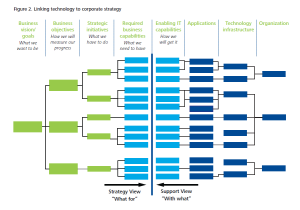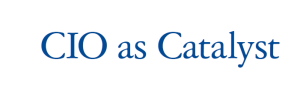
In the past twelve months or even more, I think there have been some exceptional reports and thinking coming out of Deliotte’s group on business issues
These have been from their dedicated practice centers, their University Press and the Deliotte Consulting LLP, mainly from the US practice.
I would regard their thought leadership as close to the top or even at the very top of any of the big consulting firms.
I’ve certainly gained some richer understanding as I am sure many others have and for me Deloitte deserve significant praise for investing in their thought leadership thinking.
I have been reading their interesting views on different aspects of business redesign through their varied and detailed reports that have included: “Work environment redesign”, “Employee engagement”, “Board practices”, “Developing effective governance”, “Integrated reporting for M&A’s”, “Field guides to practical IT, “Tech fusion for CIO’s” and recently a broad report around “Business Ecosystems”.
I’ve always followed closely the Deliotte’s Center for the Edge on their pioneering work coming from the likes of John Hagel, John Seely Brown, Tamara Samoylova and Duleesha Kulasooriya and all their research team.
They really do push the boundaries and thinking to prompt us all.
Here I just wanted to firstly publically acknowledge all this great work but to pick up on one part of a report, of 150 pages, that suggests the “CIO as chief integration officer”. It pushes the CIO role into a far more prominent role, which makes total sense.
The CIO needs to become the Chief Integration Officer.

As they rightly point out in the Deloitte Tech Trends 2015 report, as technology continues to transform existing businesses and their business models, the CIO is evolving rapidly into a key for integrating these significant changes occurring into the core of the business mission.
As the report suggests the CIO can not only be the connective tissue but the driving force of intersecting” all that is needed to work in this connected world.
Business strategy and technology cannot be separated, they need to be constantly harnessed and balanced as never before, in feasibility, resolving complexity and managing all the risks associated with the changes unfolding, leveraging all the potential of the existing with designing and exploiting the disruptive aspects coming daily at a business.
The level of collaboration and cooperation between all C-Level executives to the CIO is absolutely essential to respond in dramatically different ways than the past, it needs to radically be seen as a collaborative partnership not in adversarial ways, as often in the past.. IT has such a transformation role to play but it has to firstly ‘transform’ itself.
Overcoming political resistance and organizational inertia is critical for the CIO, starting with his own team
The following was a shortened checklist of suggestions offered for the changes that are needed to be brought into the CIO’s thinking, to dramatically alter the dynamics and perceptions of his role and contribution and that of the central technology group, from initally getting their house in order and then being recognized as critical to shaping the business future:
* Work more like a venture capitalist by adopting a portfolio management approach.
* Provide visibility into the IT “balance sheet” for an understanding the assets and how they align to strategic priorities in projects, hardware and software, data, contracts, vendors and partners.
* Organize assets to address business priorities by striving for operational excellence by mastering that capability by delivering on what is needed and then that moves the needle to earn the right to help shape the business transformation.
* Focus on flexibility and speed to advance agility, responsiveness, being adaptive in experimentation and innovation.
Then link the potential of tomorrow to the realities of today in the following suggested ways:
- Create a deliberate mechanism for scanning and experimentation
- Rapidly vetting and prototyping new ideas and optimizing for return on assets.
- Build a culture within the team and those associates that encourages failure by learning
- Think big, start small, learn and leverage fast and then scale quickly
- Collaborate to solve tough business problems
- Tapping into diverse thinking, assets and entities
- Actively engage with business peers to influence their view of the CIO role
- Focus on delivering on the promise of service predictability, reliability and efficiency’ as and when’
- Serve as the connective tissue to all things technology, linking the various initiatives
- Advocating platforms instead of point solutions, keeping adaptive and flexible
- Design continuously the architecture and its integration in optimal ways.
- Deliver ‘prime time’ to the business units the security, scalability and reliability.
Grabbing the present and future opportunities that technology is delivering
The role of the CIO and the IT organization under him or the designated person needs to rapidly change from those past perceptions of being remote and restricting the level of change that was required by the business unit to just do their job as expected.
I don’t think the suggested change list outlined above is bad for the incumbent CIO to think through and decide how they are going to change and be seen as embracing their own change.
The ownership of a digital strategy is somewhere where the CIO can be and often is accountable for and needs to show a decisive position on that embraces all the present and future business needs.
It’s design touches increasingly on every corner of the organization, increasingly in mission-critical ways and its capability to deliver on time, in the right way is absolutely essential.
Technology needs to be elevated from personal, sometimes entrenched positions, into a comprehensive plan, recognized for its grasp, perception, understanding and knowledge of what the business requires.
The managing of this really vital strategic asset, one of establishing efficient operations that can effectively do their job but equally lay in the foundations for the organization to respond to breaking and planned opportunities to grow the business effectively, as and when required is no easy task, it needs deep understanding and be conducted in a highly collaborative environment.
It is the CIO who needs to step up and take on this challenge as the chief integration officer but he needs his colleagues to see he has at his disposal the tools, structures, solutions and architecture to deliver on the promise.
The friction of the past has to be put well-behind all, as the organizations future is even more at stake than ever. Deloitte suggests in this report that: It is for the CIO to firstly, put his internal technology house in order, then really leverage the advances in science and emerging technologies, to drive innovation as the growth enabler and finally, re-imagine their own roles to focus less on technology management and more on the total business strategy for what is needed.
Solving the moment, delivering the future
There has never been a more defining time for the CIO to step up and fundamentally deliver on the promise of technology, by connecting an organization and aligning its parts into a cohesive whole.
One that leverages ‘all things’ available to take the business forward in strategically valuable ways as well as operationally effective ones, to grow its sustaining value in how it functions, responds and adapts in our rapidly changing and challenging world.